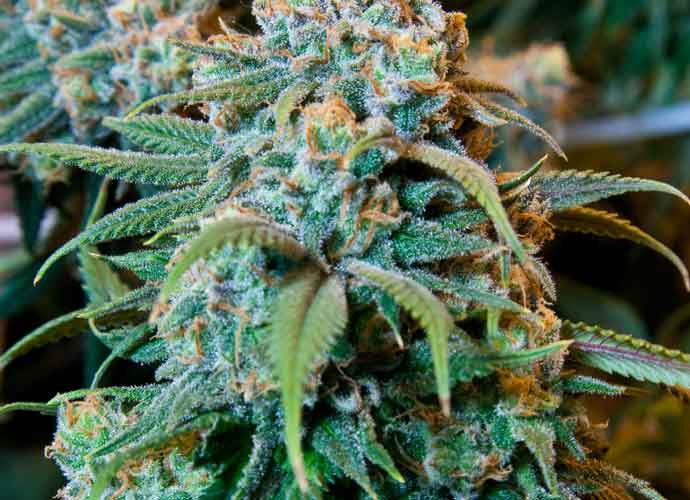OPINION: Why Pot Legalization Failed In New York State – And How It Will Eventually Pass
By Bryon Adinoff, M.D., & David L. Nathan, M.D., DFAPA
In January 2019, cannabis legalization seemed imminent in New York. For years, legalization had been blocked by the Republican-controlled State Senate, but now there was a new Democratic majority. The only question seemed to be how – not whether – the legal framework would be designed.
In January 2018, Governor Andrew Cuomo instructed the State Department of Health to form a working group to evaluate the pros and cons of legalization. The expert panel released a comprehensive report in July, 2018 concluding: “The positive effects of regulating an adult (21 and over) marijuana market in NYS outweigh the potential negative impacts.” It was a bold report, addressing contentious issues such as mental health, motor vehicle accidents, youth use and addiction, as well as the harmful effects of cannabis prohibition. The panel noted that youth use had not increased in Washington or Colorado since legalization, as corroborated by a recent study. The report referenced our advocacy group – Doctors for Cannabis Regulation – quoting several times from DFCR’s historic Declaration of Principles.
In 2018, representatives of the Department of Health also held a series of public listening sessions for New Yorkers to express their views. A majority of participants spoke in support of legalization, but there was also vocal opposition. The NY Parent Teacher Association opposed legalization, even though government statistics showed decreased use in 12 to 17-year-olds in Colorado and Washington since those states opened regulated systems in 2014. Other studies showed that overall motor vehicle accident fatalities since legalization in those two states were comparable to non-legal states.
Subscribe to our free weekly newsletter!
A week of political news in your in-box.
We find the news you need to know, so you don't have to.
In January 2019, Governor Cuomo proposed adult-use cannabis legalization as part of his 2019 budget, but the governor’s plan was quite different from the Senate and Assembly’s plan. There were disagreements about the legality of home cultivation, division of tax revenue, and other key issues. Organizations like DFCR and the Drug Policy Alliance spoke in support of legalization, highlighting lessons learned from early cannabis legal states, such as the obvious need to ban packaging and advertising that might attract children. A persistent opposition aggressively lobbied legislators and met with local governments throughout the state, generating significant news coverage. Rarely did local news organizations mention the health and safety benefits of a regulated system, including product testing, proper labeling of products and preventing underage access at dispensaries as at liquor stores.
Notably, opponents sent representatives to small cities and towns in upstate New York and met with both Republicans and Democrats. In contrast, pro-legalization groups focused more on large cities and almost exclusively on Democrats, even though some of the strongest advocates for legalization are Republicans and Libertarians.
Despite the lobbying efforts of a well-funded opposition, last-minute negotiations nearly resulted in an agreement. The Governor met with Senate and Assembly leaders the day before the end of the legislative session in New York’s famous “three men [and/or women] in a room” negotiations. After significant compromise, inside sources revealed agreement on all but one issue: how much money would be directed toward communities disproportionately affected by the war on drugs. But for this sticking point, a legalization bill would have been passed by both bodies and signed into law. However, as with the private dinner where Thomas Jefferson, Alexander Hamilton and James Madison struck a deal in 1790, we can only rely on the participants’ versions of what went on in the proverbial “Room Where It Happens.”
Fortunately, all was not lost. A bill to decriminalize cannabis possession of less than two ounces was passed by the New York Legislature and signed by the Governor. Perhaps more significantly, the bill automatically seals convictions for those previously convicted of possessing small amounts of cannabis, clearing the criminal records of 160,000 individuals.
Although legalization fell short in 2019, the fight will resume next year. Fortunately, legalization may be easier to pass in 2020. Recently, Illinois became the first state to set up a legal regulated system through their state legislature rather than a voter referendum. And national support for full cannabis legalization is at an all-time high, with polls even showing that a majority of Republicans are now in favor.
One lesson of New York’s 2019 deadlock is the need for consensus on cannabis revenue allocation around the country. All agree that disproportionate arrests of people of color must stop, but the issue of whether tax revenue should be directed toward individuals and communities most impacted by the war on drugs remains a sticking point. Indeed, few states have incorporated funds for restorative justice in successful cannabis ballot initiatives, laws and regulations. Anecdotally, many upstate New York and Hudson Valley lawmakers, especially those from low-income rural districts, feel that revenues that could help with their constituents’ needs should not automatically be directed toward New York’s larger cities.
The State of New York, like several northeastern U.S. states, is poised to finish in 2020 what it started in 2019. By listening to their constituents, and with the support of social justice and public health advocates, lawmakers must strike a deal that balances the diverse needs of New Yorkers from all parts of the Empire State.
Bryon Adinoff, MD, is the Executive Vice President of Doctors for Cannabis Regulation (DFCR). David L. Nathan, MD, DFAPA, is DFCR’s Founder & President.
Get the most-revealing celebrity conversations with the uInterview podcast!








Leave a comment